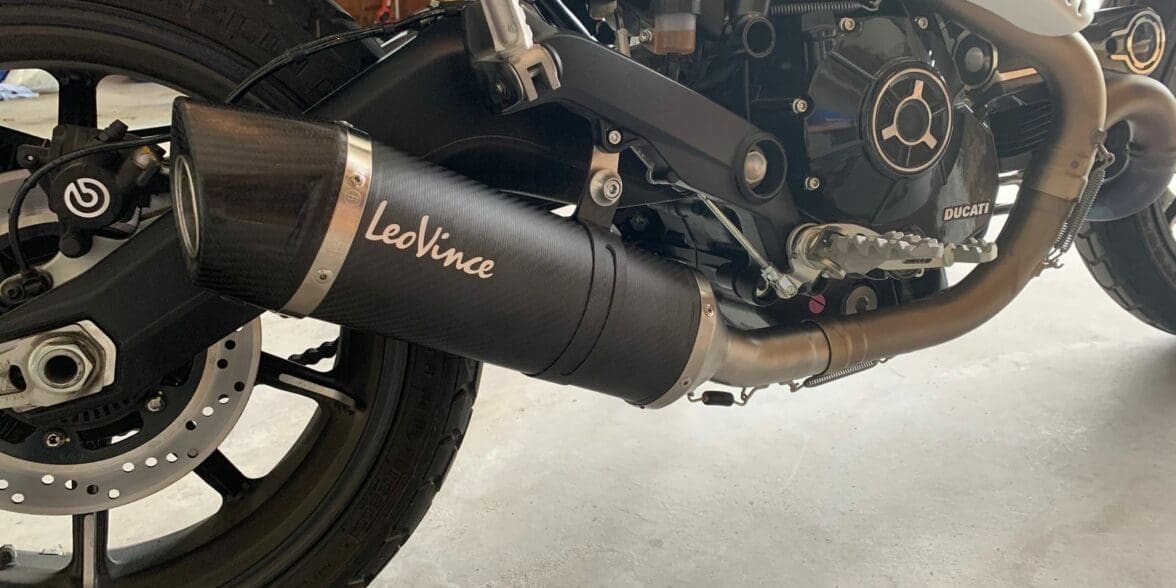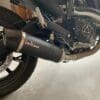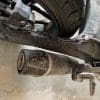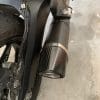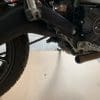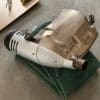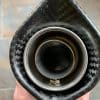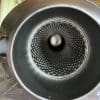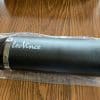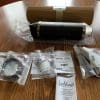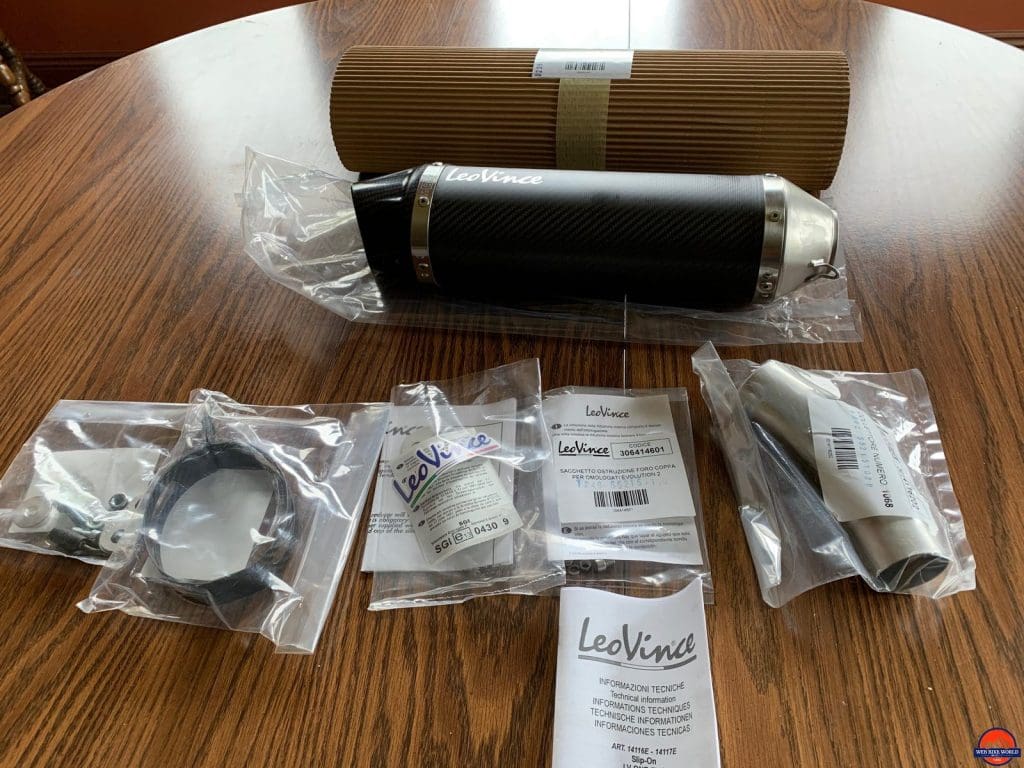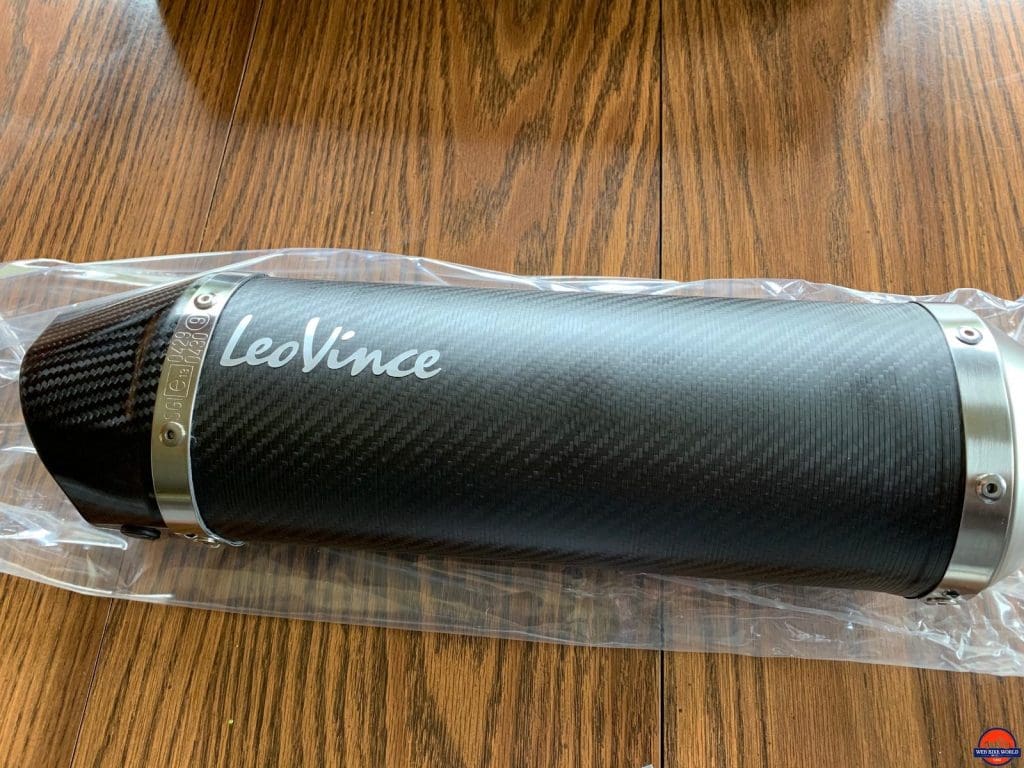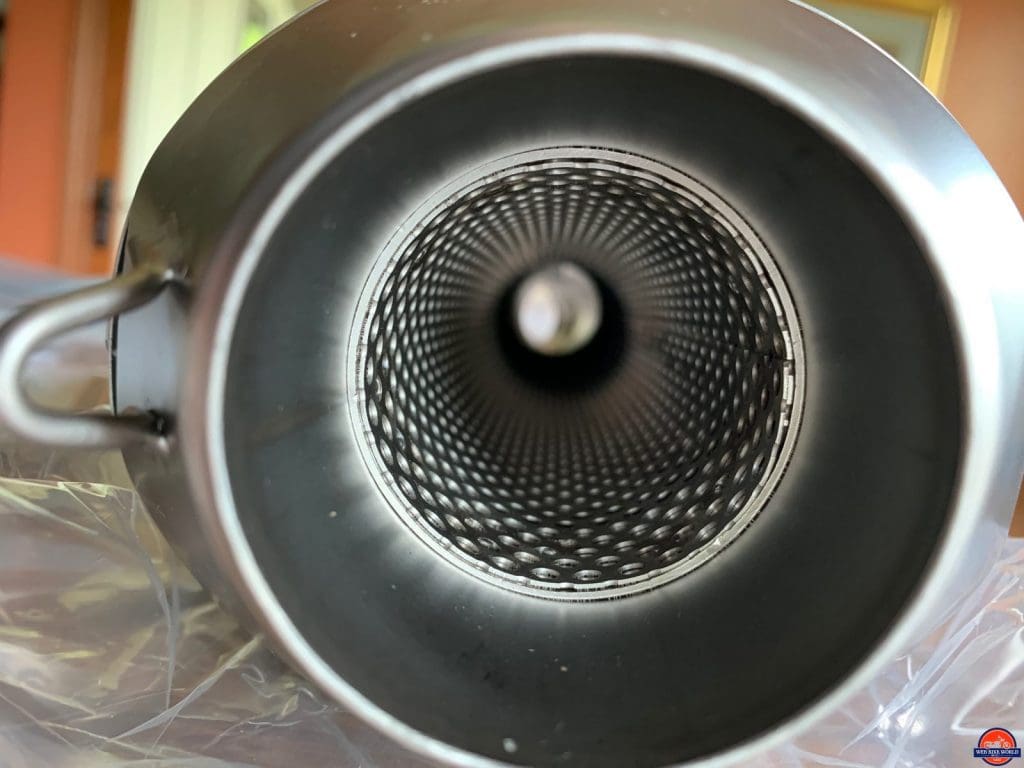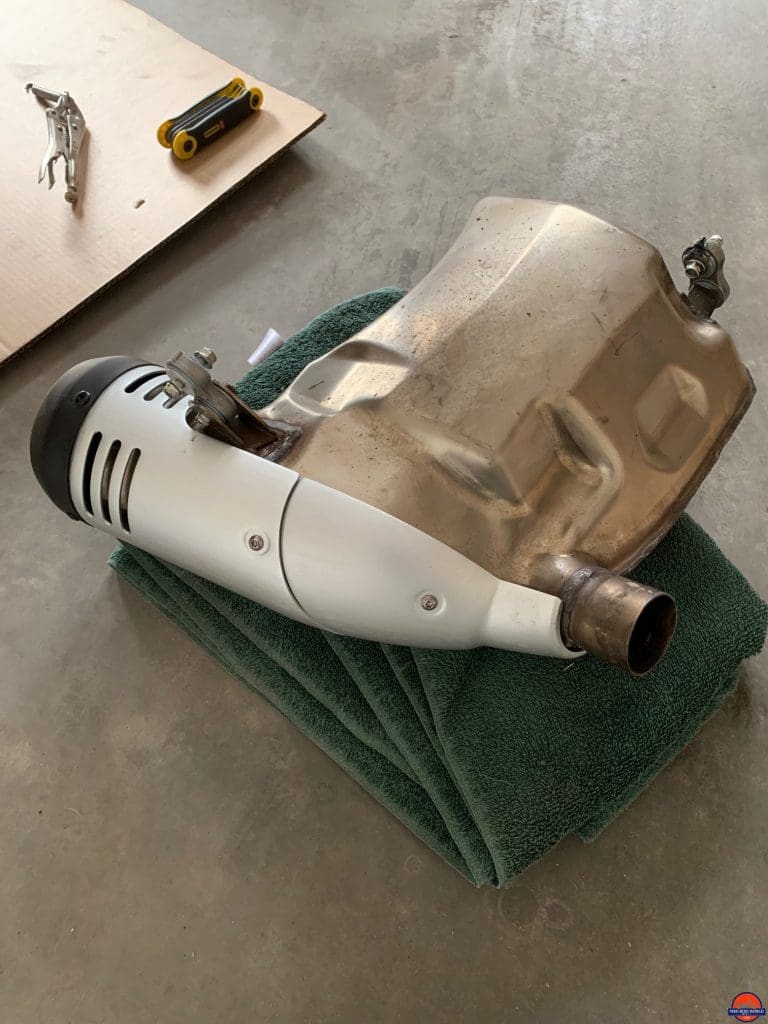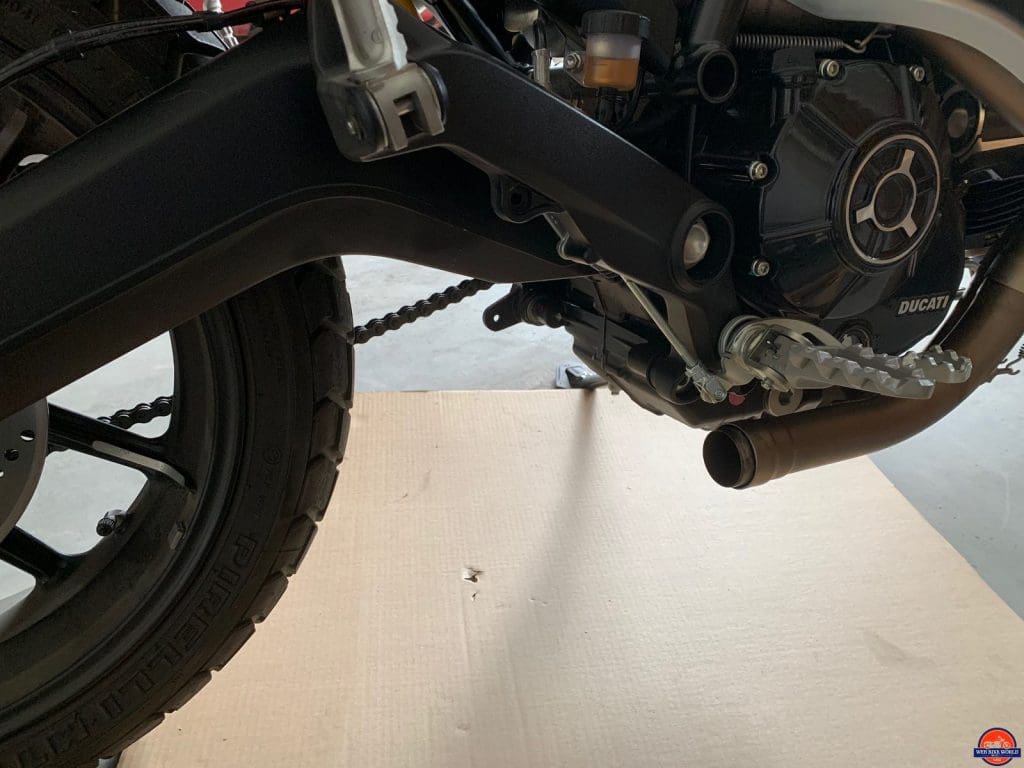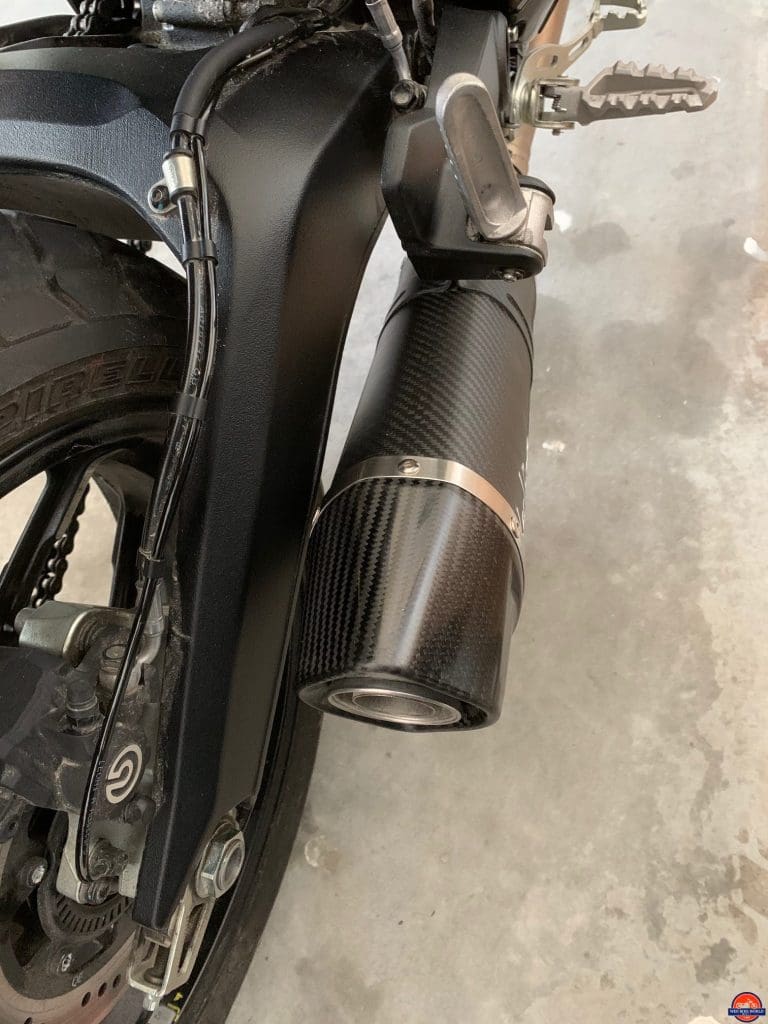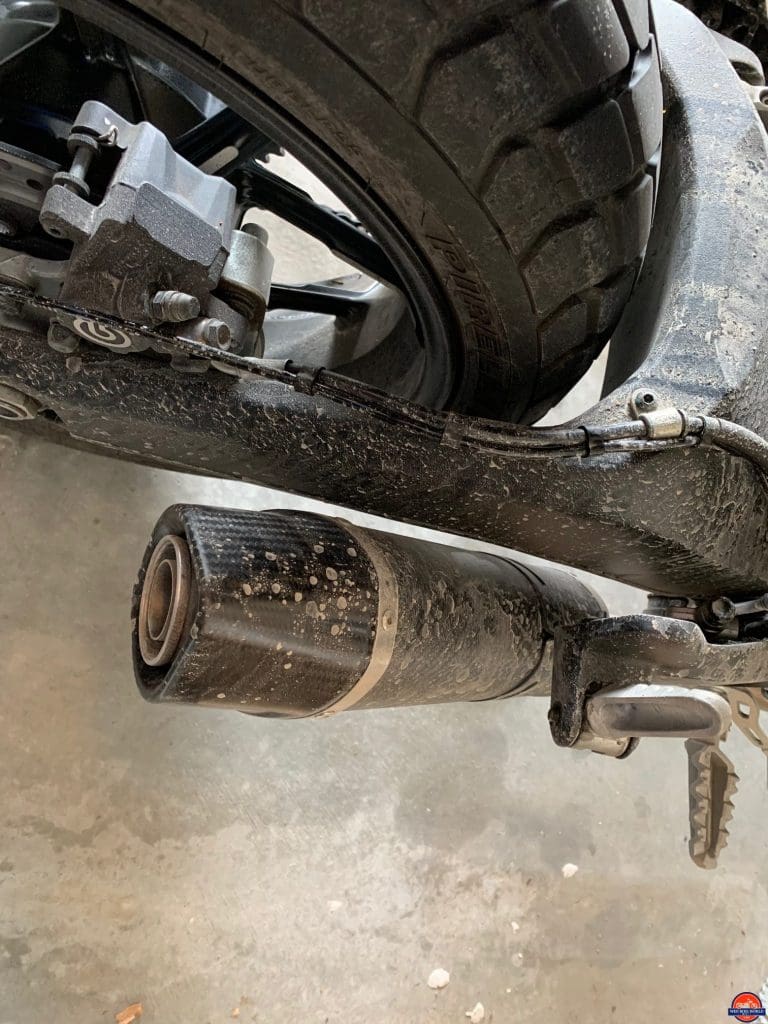One of the most fun things about getting a new motorcycle is modifying and accessorizing it to make it your own. I’ve had my Ducati Scrambler Icon for a little over a year now. After the initial break-in phase I started adding a few of my own touches. First, some comfort features like a small wind screen, better suspension, and beefier foot pegs. Then I added a few aesthetic upgrades, like new mirrors in a more classic style. And finally some convenience items like a helmet lock and luggage. I thought I was all done with it but then winter and quarantine came. Too much time staring at it sitting in my garage I guess because I began to think maybe a new exhaust would be nice.
The 2 into 1 stock exhaust is…ok, but I’ve never thought it fit very well with the classic retro looks of the Scrambler. It’s kind of short and plump (like me) and a little too contemporary looking. The sound is so quiet I have a hard time hearing it when I’m riding and the upturned position of the muffler dumps some hot air on the back of my leg when I’m stopped.
I had the whole winter to think about it and ponder my options, including the Yoshimura exhaust reviewed by Wade last year. I listened to Youtube sound bites and read customer reviews. After much internal debate I decide on the LeoVince LV One EVO.
What’s in the Box?
I ordered my new exhaust from Revzilla and was seriously impressed with the 3 day delivery time. Considering the challenges in today’s world I thought it was pretty amazing. Opening the box I was struck right off the bat by the thorough packaging. Everything was neatly compartmentalized and encased in heavy corrugated cardboard.
Included was the muffler, complete with the DB killer installed, a short length of connecting pipe with attaching spring, a bag containing the attachment bracket and all the nuts, bolts and washers to install it, and a separate bag with everything you need to remove the DB killer. Also in separate bags was the installation instructions and retention strap.
Everything was in great condition and nothing was missing, which has to be a first for me ordering motorcycle parts on-line. I almost always have to run to the hardware store for a missing washer or to replace a bolt that won’t quite thread.
Design & Construction
LeoVince has been making exhausts since 1954. That’s longer than I’ve been alive which is saying a lot. Their website doesn’t really say where they’re based but judging by the name and the language on all the packing materials I think it’s pretty safe to say they’re made in Italy. They have a large facility for manufacturing and everything is made in-house.
I’ve been impressed with their simple classic designs and nice finishes. Even the script aluminum logo is clean and classy looking. The LV One EVO comes in black, carbon fiber, and stainless steel finishes (although I couldn’t find it anywhere in black). I chose the carbon fiber because I thought it looked nice with the blacked-out frame of the Icon and it’s almost a pound (.33kg) lighter than the stainless steel model.
The carbon fiber version is made with a 2 layer pre-peg full carbon sleeve which gives it a lovely deep, matte appearance. It has a texture to it and like all matte finishes shows fingerprints pretty easily. The end cap is full carbon with a gloss finish. Inside the muffler, heat resistant packing is made to withstand temperatures up to 1650ºF. Everything is held together with TIG welds.
This slip-on weighs 4.74 pounds (2.15 kg), a nearly 8.5 pound (3.84 kg) weight saving over the stock muffler, which makes a big difference on a bike as light as the Scrambler. It’s also 7.5” longer with a downturned end cap so the hot exhaust fires straight out and not up onto my leg. The muffler portion has an oval design so it hugs the bike a little closer which I appreciate with my short legs at stop lights. As I mentioned earlier it comes complete with a removable DB killer which I decided to leave in so as not to upset my neighbors or ruin my hearing. All the pieces and parts appear to be sturdy and well made.
Installation
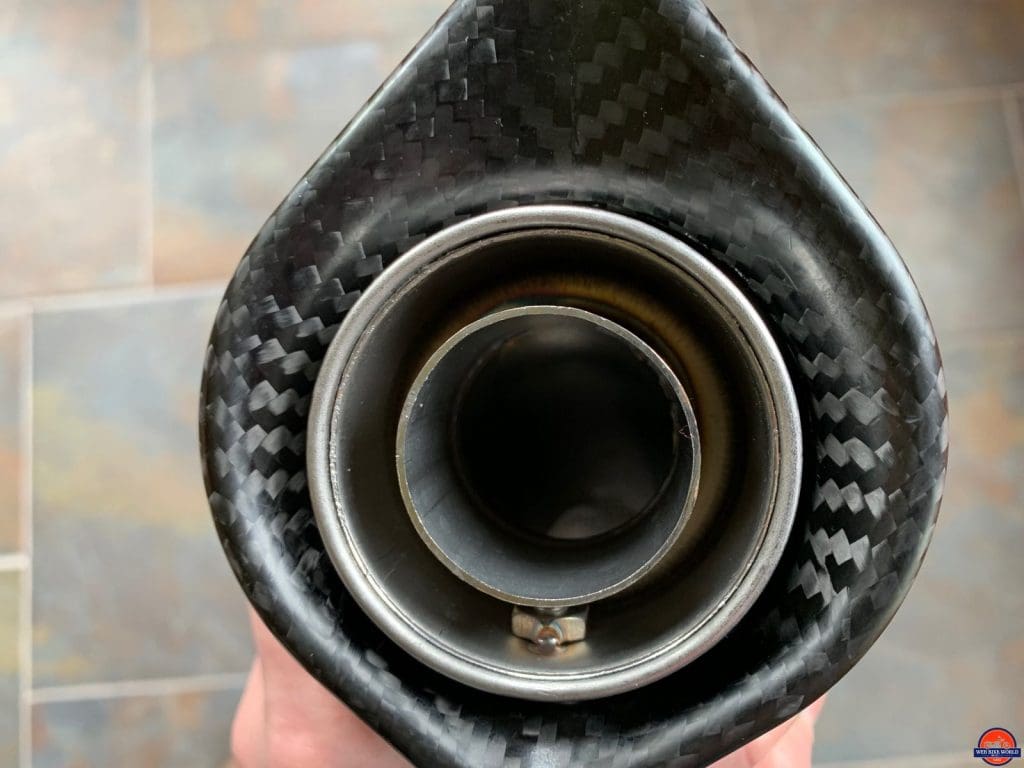
I must say I always have a little bit of trepidation before I embark on replacing parts on my bike. I don’t have a lot of upper body strength so tightening and loosening nuts and bolts are always a challenge and while I’ve been riding for a very long time I don’t have a long history of wrenching on my bike. So, before I started I read through the instructions (there aren’t many) and examined the exploded view closely. It looked pretty straight forward.
Turns out I needn’t have worried. Removing and re-installing the exhaust took all of maybe 20 minutes. Removing the old exhaust was as easy as removing two bolts and a spring (which my husband helped with). Installing the new one was as easy as one bolt (with spacer and washer) to attach the carbon fiber retention strap around the muffler to the bracket, and another to connect the bracket to the bike. Springs attached the connector pipe to the muffler on one end and the stock exhaust pipe on the other end.
I did pre-install the connector pipe to the muffler before I attached it to the bike which is backwards from the instructions. They have you connecting the short pipe to the stock exhaust first but I thought it would be a lot easier to get that spring on before it was connected to the bike and turns out it was. Everything lined up easily and it looked great when I was done. Piece of cake!
To Remap or Not to Remap…
Slip-on exhaust manufacturers maintain that remapping a fuel-injected bike is not necessary. The following is from the LeoVince website: “…remapping isn’t necessary because our exhausts are developed to ensure optimum operation even with the bike in standard configuration. Remapping the bikes fuel injection system and/or the installation of an additional unit control may further improve the performance, however.”
On the other hand motorcycle forums are rife with experts that insist you must always remap if you switch out the exhaust with a freer-flowing unit. Checking out the Ducati forum there are some intense discussions about open loop vs closed loop, increased engine temperature, lean conditions, and ultimate engine damage. It’s all very confusing and a little scary.
So before I messed with my bike I decided to consult an expert – my Dad. My Dad has been building motorcycles for as long as I can remember. He makes his own parts and fabricates his own exhausts so I figured he would be an excellent resource. After a lengthy discussion (I haven’t seen him in awhile with the pandemic) we came to the conclusion that since I’m not changing the pipe diameter or length and I’m not messing with the intake it should be fine. But the ultimate test will be when I ride it.
Sound
In a word – Amazing! It’s not a lot louder than stock but it’s deeper and has a nice rumble. I did the before and after sound videos below but I’m not sure they capture how good it sounds. I’m very pleased with it. My husband’s comment was ‘it sounds like a Harley’ which I think was a compliment.
Stock Exhaust
LeoVince Exhaust
How it Rides
Most manufacturers claim a 3-4 hp boost with the addition of a slip-on exhaust. The Scrambler is already a peppy little bike and it would be pretty difficult to discern that small of a bump by the seat of your pants. After riding it back to back before and after the install I thought it was the teeniest bit quicker afterward but that could be as much from the 8+ pound weight loss as from any horsepower boost.
I was able to hear the exhaust over the engine clatter and wind noise but it wasn’t obnoxious and doesn’t threaten what hearing I have left. It does sound a lot tougher than my cute little bike has any right to.
The throttle response remained just as smooth and there was no deceleration popping so I don’t know that the slip-on had any effect on engine performance. I did think it ran a lot cooler but the position and extra length of the new exhaust probably had a lot to do with that. I’ll be keeping track of my gas mileage in the weeks to come to see if there has been any effect on fuel economy.
Care & Maintenance
I christened my new LeoVince slip-on straight away. On my first ride it started to rain about 5 miles in so by the time I got home it was covered in mud and road grime. After it cooled I gave it a bath with mild soapy water and then applied a spray-on wax to protect it. Good as new! I did find out you need to be careful with the LeoVince logo. The aluminum logo is pretty thin and I bent one of the letters washing it. Otherwise it cleans up easily.
The instruction manual suggests using gasoline or alcohol for heavy duty cleaning but I haven’t been able to find alcohol on the shelf for months and gasoline seemed unnecessarily harsh for a little mud.
Conclusion
All in all I’m very pleased with the latest addition to my bike. I think it now has a cleaner more cohesive look and it sounds great. At $558.95 it wasn’t cheap but considering the quality of the product and the fact that many of the exhausts made for my Scrambler are well over $1,000 I thought it was a reasonably good value.


